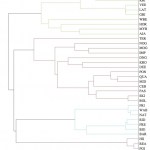Psychological Science
"Nearly 50 percent of Americans have been mentally ill at some point in their lives, and more than a quarter have suffered from mental illness in the past twelve months. Madness, it seems, is rampant in America."
This is how Richard J. McNally opens his new book, What Is Mental Illness? Earlier this year, David Dobbs of the Neuron Culture blog at Wired, recommended that I try to get my hands on an advance copy of this new book by McNally, a Professor of Psychology at Harvard. Well, I did indeed manage to get my hands on a galley copy of the book, thanks to the fine folks at Harvard University…
Human infants have one important job during the first years of life, and that is to learn about the world and their culture from their parents and other caregivers. But what is learning? I've previously written that Hungarian developmental psychologists Gergely and Csibra have defined learning as the acquisition of new, generalizable knowledge that can later be used within a new context. Further, they have posited that evolution has prepared humans to learn generalizable knowledge from their caregivers. They proposed an elegant hypothesis: that a specialized innate pedagogy mechanism - called…
My latest piece for LAist just went up:
Retail therapy: It's the answer for almost any problem. Girlfriend broke up with you? Didn't get that promotion? Buy yourself something pretty. People like to shop, especially for high-status items, when they're feeling down. Decades of research has indicated that when a key feature of one's identity is threatened - such as by being passed over for a promotion or being dumped by a former lover - people turn to things. Possessions can allow us to signal our awesomeness to others. And if others think we're awesome, then we just might begin to remember…
What is learning?
Most psychologists (indeed, most people in general) would agree that learning is the acquisition of new knowledge, or new behaviors, or new skills. Hungarian psychologists Gergely and Csibra offer a deceptively simple description: "Learning involves acquiring new information and using it later when necessary." What this means is that learning requires the generalization of information to new situations - new people, objects, locations, or events. The problem is that any particular piece of information that a human or animal receives is situated within a particular context…
There's a very well-known experiment in developmental psychology called the "A-not-B task." The experiment goes something like this: you, the experimenter, are seated opposite a human infant. Within the reach of both you and the child are two boxes: box "A," and box "B." You hide a toy in "A," in full view of the infant. As expected, the infant reaches for "A" to retrieve the toy. You repeat the process several times. Each time you hide the toy in "A," and each time the infant reaches for "A" to find the toy. Experimental set-ups like this are extremely common in infant and animal studies.…
You know that old phrase, "monkey see, monkey do"? Well, there might be something to it, except that chimpanzees aren't monkeys. (Sadly, "ape see, ape do" just doesn't have the same ring to it.) A new paper published today in PLoS ONE has found evidence that chimpanzees have contagious yawning - that is, they can "catch" yawns from watching other chimpanzees yawning - but (and here's the interesting part) only when the chimp that they're watching is a friend.
At first, scientists thought that contagious yawning was the result of a releasing mechanism - in other words, seeing someone yawn…
Welcome to Territoriality Week! Every day this week, I'll have a post about some aspect of animal or human territoriality. How do animals mark and control their territories? What determines the size or shape of an animal's territory? What can an animal's territory tell us about neuroanatomy? Today, I begin by asking two questions: first, what is the functional purpose of establishing territories? Second, to what extent can we apply findings from research on animal territorial behavior to understanding human territorial behavior?
It seems that everyone becomes an amateur animal behaviorist…
Lots of animals are well aware that bigger means scarier. In stressful or aggressive situations, for example, the hair or fur of chimpanzees, rats, cats, and even humans stands up on end (in humans, given our lack of fur, this results in goose bumps) in an effort to dissuade a potential attack. Elephant seals use a display called "rearing up" to make themselves look bigger - as if they need to look bigger in the first place!
Since some animals tend to be good at looking bigger than they truly are, visual cues may not actually be a reliable method of sizing up another individual. In addition…
PsychBytes is an experiment: three recent findings in psychology, each explained in three paragraphs or less. Generally, these are papers that I wouldn't have otherwise covered in this blog. Please share your thoughts on this model in the comments. What works, and what doesn't? Would you like more PsychBytes in the future?
What's In A Name?
People who settle down and build a life in the frontier tend to be more individualistic, even if they started out with more interdependent values. Some features of the frontier life that would be attractive to an independent person are low population…
"At home, a young man should be dutiful towards his parents; going outside, he should be respectful towards his elders." -Confucius (Chinese philosopher, 551-479 BCE)
"Your real boss is the one who walks under your hat." -Napoleon Hill (American author, 1883-1970)
Those two quotations reflect a cultural difference in how people construct their own conceptions of who they are and how they interact with others. That the particular culture an individual is raised in helps to determine the way they understand the self is clear. Western cultures, such as in America or the UK, tend to focus on…
Painstaking scientific research has identified seven dating tips that could boost your chances on Valentine's Day ... including shouting in his right ear and scaring him witless.
Whether or not you have a Valentine this year, head on over to check out to my latest piece in The Guardian: Valentine's Day dating tips from lovestruck scientists.
Photo: Getty Images/Brand X
What's the best way for a lonely guy to get a date? If you're a Splendid Fairy-Wren (Malurus splendens, native to Australia), your best bet might be to frighten the object of your affection.
You've learned all about the birds and the bees; now it's time to learn from them.
Lots of research has shown that animals reduce their sexual behaviors when predators are around. After all, it isn't just potential mates who would see or hear an elaborate mating display, but also potential predators. The male splendid fairy-wren does something a little bit unusual, though. Gray Butcherbirds (Cracticus…
In honor of Science Online, which begins on Thursday night, I will be writing about lemurs this week. Why lemurs? Because on Friday morning, as a part of Science Online, I will be taking a tour of the Duke Lemur Center.
It is common among animals - especially primates - to orient their gaze preferentially towards other individuals, as well as to follow the gaze of others. Lots of attention has been paid to gaze-following, in part because the ability to recognize and orient to the behavior of others is missing or impaired in various developmental disorders, such as autism. It is well known…
Eric M. Johnson and I spent about 45 minutes discussing "evolutionary psychology beyond sex" last night, which you can see today on Bloggingheads "Science Saturday."
Or just watch it here:
"Two chimps had been shut out of their shelter by mistake during a cold rain storm. They were standing dejeted, water streaming down their shivering bodies, when Professor Köhler chanced to pass." Upon opening the door for the two chimps, Dr. James Leuba recounts, "instead of scampering in without more ado, as many a child would have done, each of them delayed entering the warm shelter long enough to throw its arms around his benefactor in a frenzy of satisfaction."
"Chimpanzees," primatologist Frans de Waal points out, "do not normally hug their caretakers for no reason." It's a compelling…
Ah, Thanksgiving. A day full of turkey, cranberries, pie, and, of course, SCIENCE! After you fill your stomach with gravy and stuffing, stuff your mind with all this great Thanksgiving science.
What's any good Thanksgiving feast without some turkey? Emily Anthes of Wonderland starts the meal off with an offering of thanks for the turkey's contribution to cancer research. But wait! That's not all the science of turkeyhood to be consumed. Feast your minds on my contribution at the Scientific American Guest Blog: the social-cognitive abilities of turkeys. And in case you're feeling particularly…
Scientists thought they had a pretty good handle on the social interactions of bottlenose dophins (Tursiops). They've used the term fission-fusion dynamics to describe dolphin (and non-human primate) society and so far it has served researchers well. Fission-fusion societies among dolphins are characterized by two levels of social hierarchy: groups of two or three related males ("first-order alliances") which work together to guard one or more females from other males, and larger teams comprised of multiple related first-order alliances ("second-order alliances") which cooperate to "steal"…
This week marked the release of Brian Switek's (blog, twitter) first book, Written in Stone. I got my hands on a review copy a few weeks ago, and I have nothing but good things to say about it. (Disclaimer: I was provided with a free review copy of the book, without any expectation that I'd review it on my blog or elsewhere.)
Written in Stone is a highly-accessible, engaging book which takes the reader simultaneously through the story of vertebrate evolution and the story of the scientists who - quite literally - uncovered it. The book's main success might be in its seamless transition back…
Despite the fact that my research lies at the intersection between cognitive, comparative, and developmental psychology, I am also quite interested in the evolution of our understanding of psychopathology. The ultimate goal of the study of psychopathology is to ground such disorders in brain and body. But our understanding of some pathologies are simply not there yet (though some of our therapeutic interventions still prove effective even if we don't quite understand the etiology of a given disease or disorder). The main conflict in the field that characterizes the study of psychopathology is…
Welcome to the mental illness mini-carnival! Mental illness, or psychopathology, is a field riddled with controversy and it can be sometimes confusing to wade through all the uncertainty and conflicting data and opinions. In an effort to help make sense of some of it, your faithful psychology and neuroscience bloggers are here to help.
"Illness is like the street you've driven down your whole life. So familiar you've never bothered to look around. We've all experienced illness, either first-hand or via someone we know, but rarely do we stop to wonder what it really is." Christian Jarrett of…

















